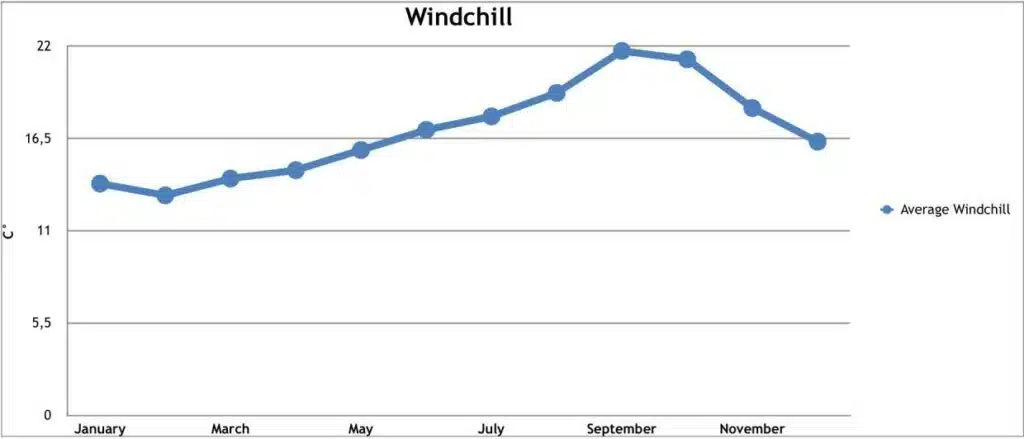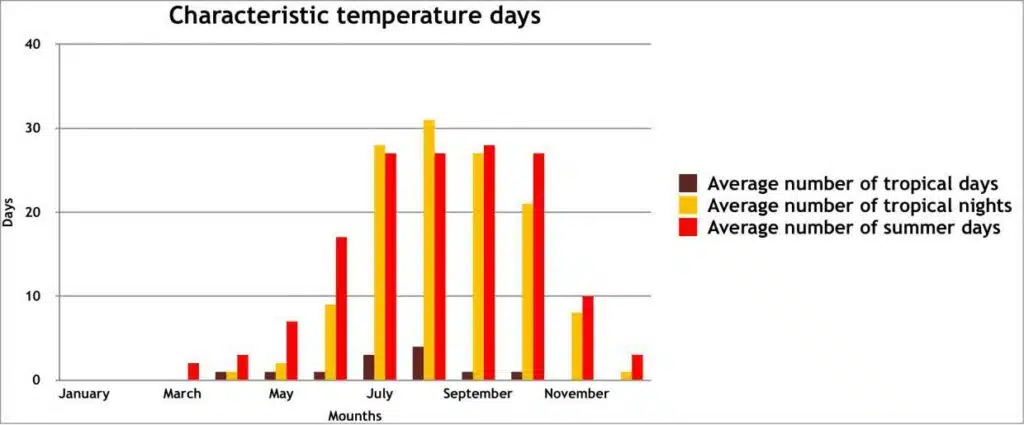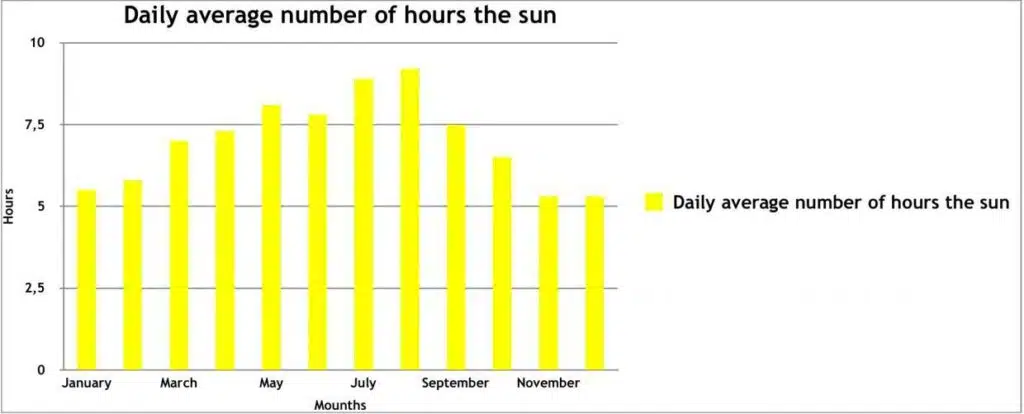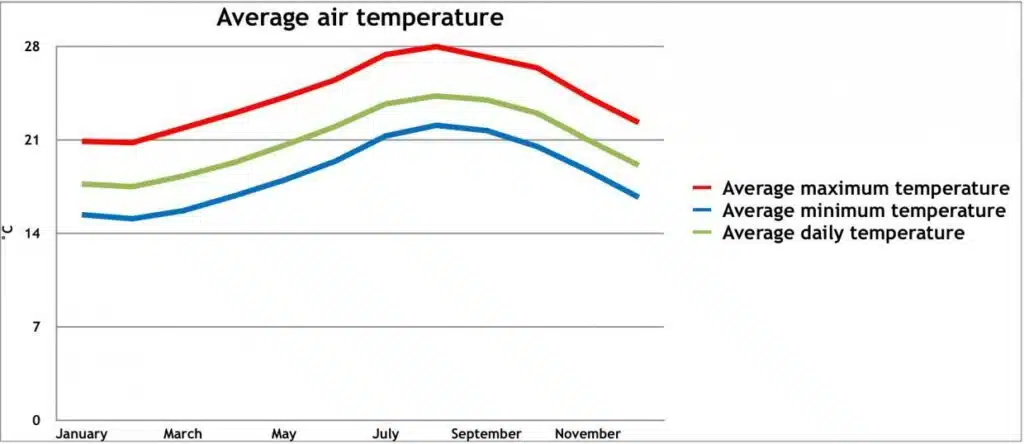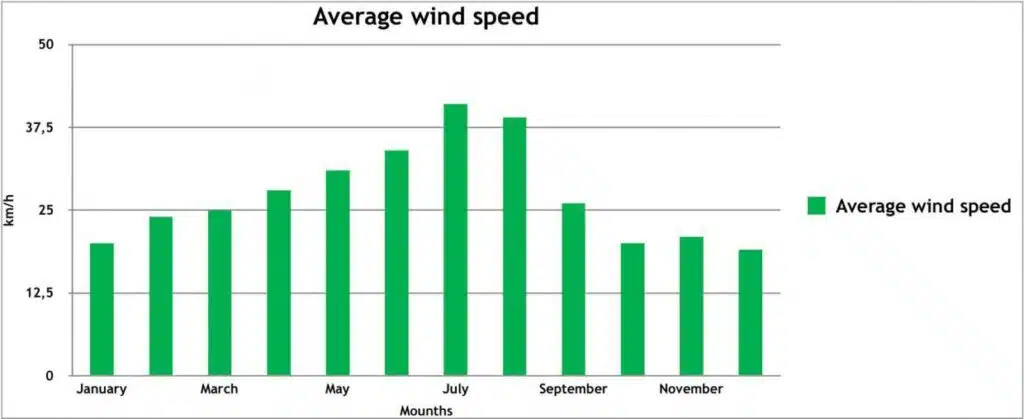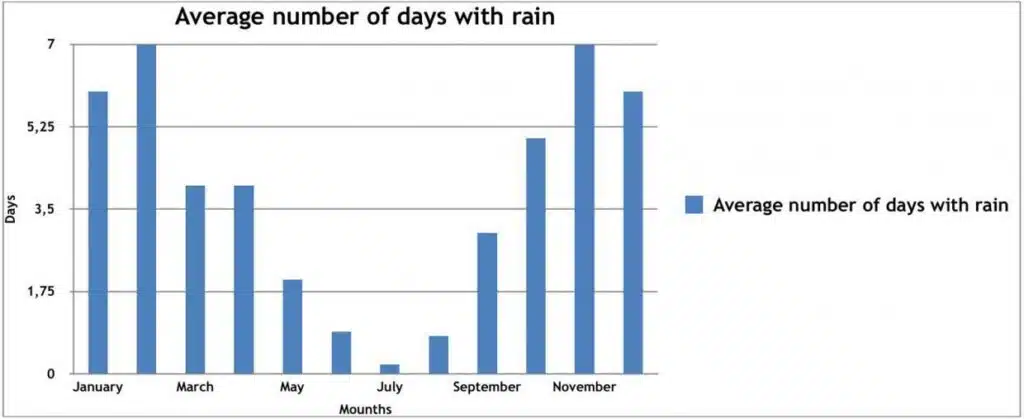On the coast of Grand Canaria, the maximum temperatures are around 21 ° C, in December to around 22 ° C. Minimum temperatures drop to 15 ° C. In winter, however, the temperature can also drop to 13 ° C. In some cases the temperature may fall even lower, but in the last 12 years the minimum night temperature has not fallen below 10 ° C.
The best climate in the world
Located just off North-West Africa and thanks to trade winds and the Gulf Stream, Gran Canaria boasts mild and pleasant temperatures all year round - with little rain. Its average annual temperature rarely falls below 24 degrees which, makes this little island a popular travel destination for the whole year.
Enjoy Endless Sunshine
From May to October you can enjoy temperatures of over 25 degrees, with July and August being the hottest months. The winter months are considered to be December to February but remain at a minimum of 21 degrees, making the Island an ideal location to get some winter sun. March signals the beginning of spring and temperatures gradually increase approaching the summer season.

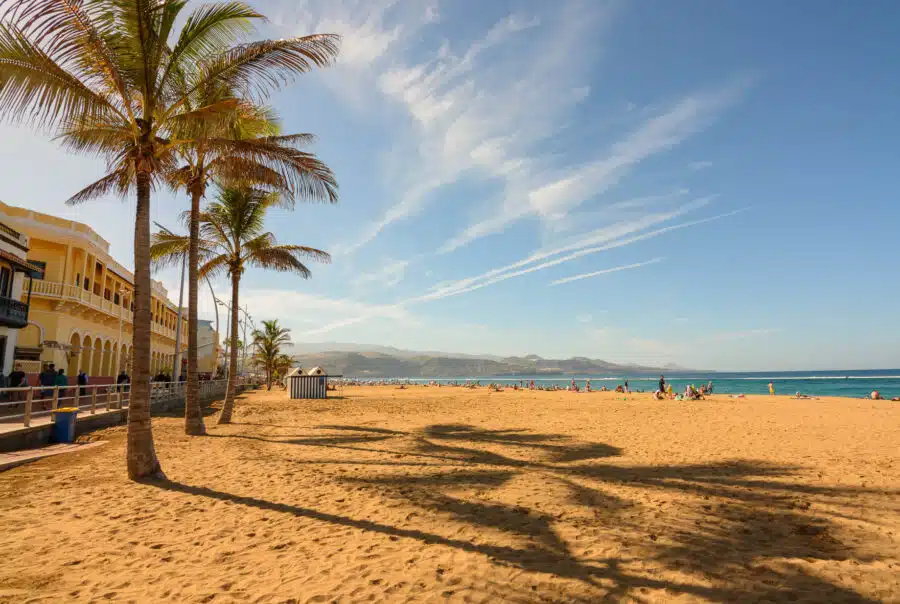
Swim in Atlantic Ocean
Sea temperatures are warmest during the summer months at around 23 degrees with temperatures getting cooler during winter, but you’ll see tourists and locals alike taking a dip throughout the year.
320
23
24
Volcanic origin
Gran Canaria is a circular island of volcanic origin and at its highest point, Pico de Las Nieves, it’s 1,949 metres above sea level. For those wishing to find slightly milder temperatures in the hot summer months, you can escape into the beautiful and mountainous centre of the Island. Milder temperatures and slightly more rain are usually found in the North East of the Island with the more desert-like South remaining very consistently hot and dry.
WINTER (December, January, February)
Another situation is in higher altitudes, where from December to February average maximum temperatures can only be around 10 ° C and nighttime around 5 ° C. While the coast of the island occurs in the winter for 6 to 7 days with rain, so in the mountains, it can be up to 15 days. Mountains are more likely to accumulate moisture, so there is a thicker cloud, which is the source for more rainfall.
SPRING (March, April, May)
From March to May, rainy days are rapidly decreasing. Historically, the daily maximum for the past 12 years has only 15 mm of precipitation. Again, the rule is that in the mountains the precipitation is a little bit more. Average air temperatures are rising slightly slower due to the colder Atlantic Ocean, as we mention it before the lower temperature of the ocean is in March. In the spring gradually increases the average airspeed. UV radiation begins to be dangerous in April, and without a sunscreen with a high UV factor, you should not be able to move around the Sun at all.
SUMMER (June, July, August)
Wind and drought. That is how we could characterize the summer of Grand Canaria. The average airspeed is twice as high as in the winter. The windiest month is July when the average speed is around 41 km/h. At the same time, this period is very dry. In June, there could be one day with rain but in July there is practically no rainfall. Temporarily increased cloud cover may be at the top of the mountains.
In July and August, four tropical days per month occur on average. The summer days are much more frequent, especially in July and August, and of course, they are a tropical night. The highest peak temperature occurred in the last 12 years on August 12, 2010, when 39 ° C was measured. The North Part and city of Las Palmas could be more cloudy. Local people famously call this period “Panzo de Burro” – The belly of Donkey.
Autumn (September, October, November)
The most ideal climate is here in the autumn when the island is tropical. Especially September and in October there are still very warm nights, thanks to the warm ocean that, despite shorter days and fewer sunshine hours is warming the island. In October, the temperature of the water has the highest temperature and can go up to 23 ° C. At the same time, humidity increases and rainy days grow.
However, these are only short storms or storms that may be more intense in the central part of the island. The average wind speed is rapidly declining. Also in November, you can spend an average of 10 summer days and 8 tropical nights on the island.
Actual Forecast
Every month details
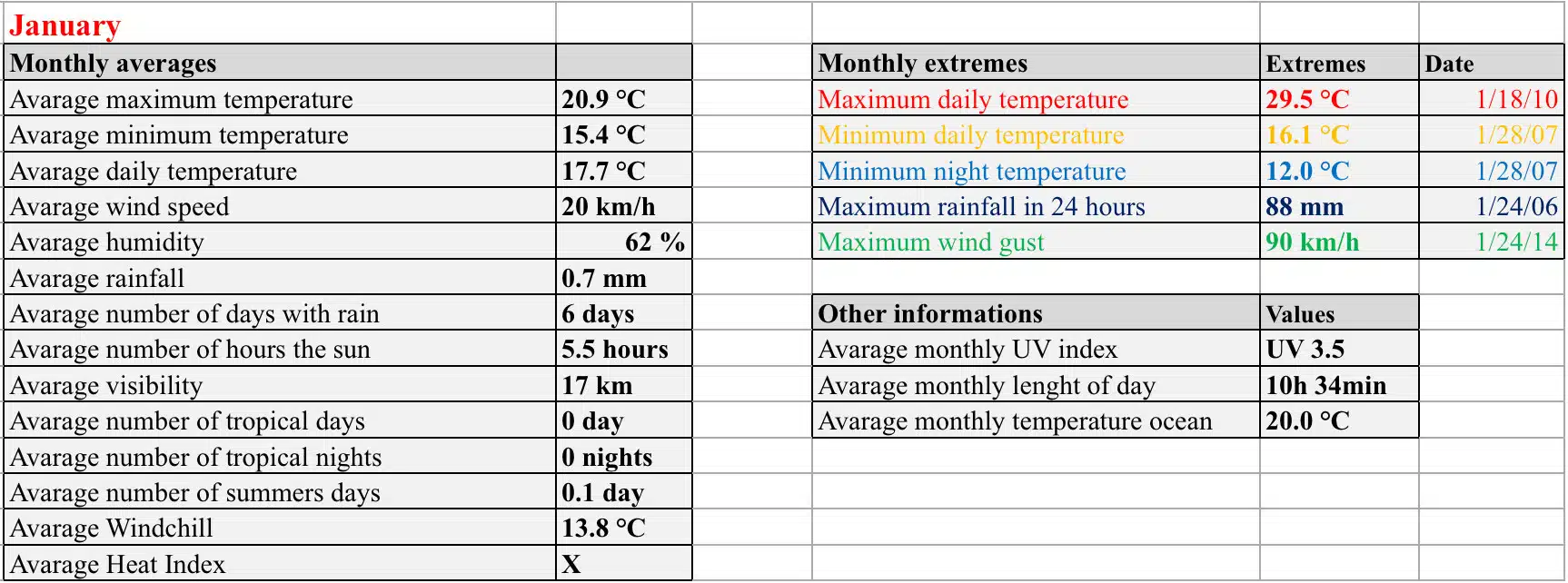
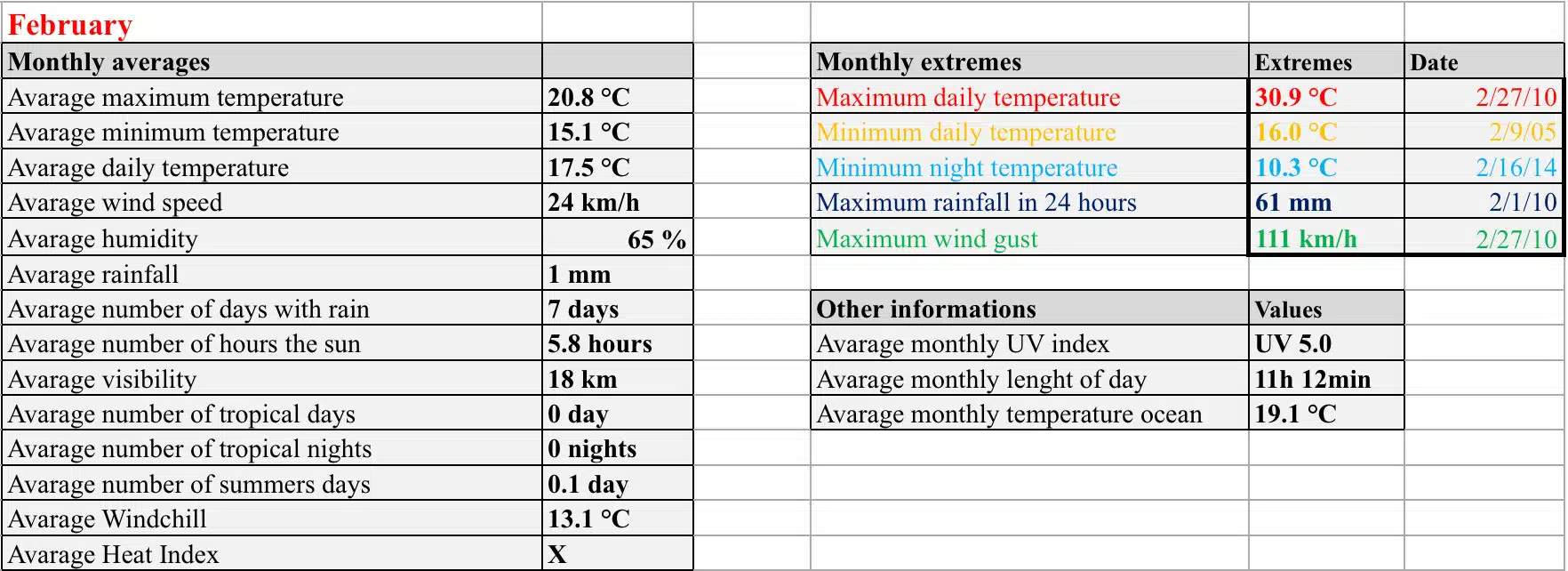
A wonderful serenity has taken possession of my entire soul, like these sweet mornings of spring which I enjoy with my whole heart.
Introduction Video — 30 seconds
A wonderful serenity has taken possession of my entire soul, like these sweet mornings of spring which I enjoy with my whole heart.
Introduction Video — 30 seconds
A wonderful serenity has taken possession of my entire soul, like these sweet mornings of spring which I enjoy with my whole heart.
Introduction Video — 30 seconds
”So, in the main tourist resorts there are 2,800 daylight hours a year, which means that the Canary Islands have the most daylight hours of anywhere in Europe. This phenomenon of long sunny days is due to their geographical situation and to the favourable influence of the trade winds and the Azores anticyclone.
Thebestclimateintheworld.com
All Year Graph Details
Explanation of terms in weather
Let's Start This Adventure
Choose one of our premium motorcycle and enjoy exploring Canary Islands
Book Now